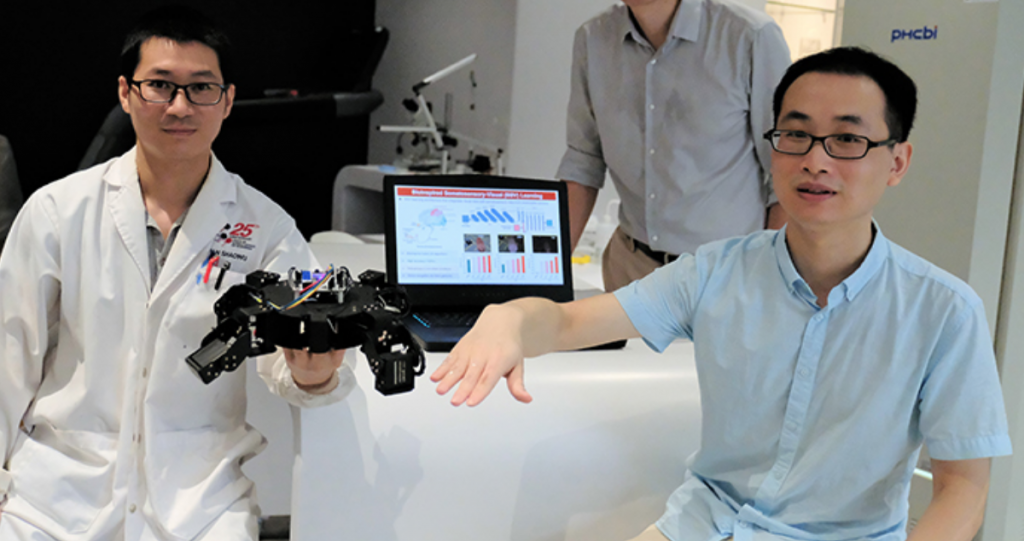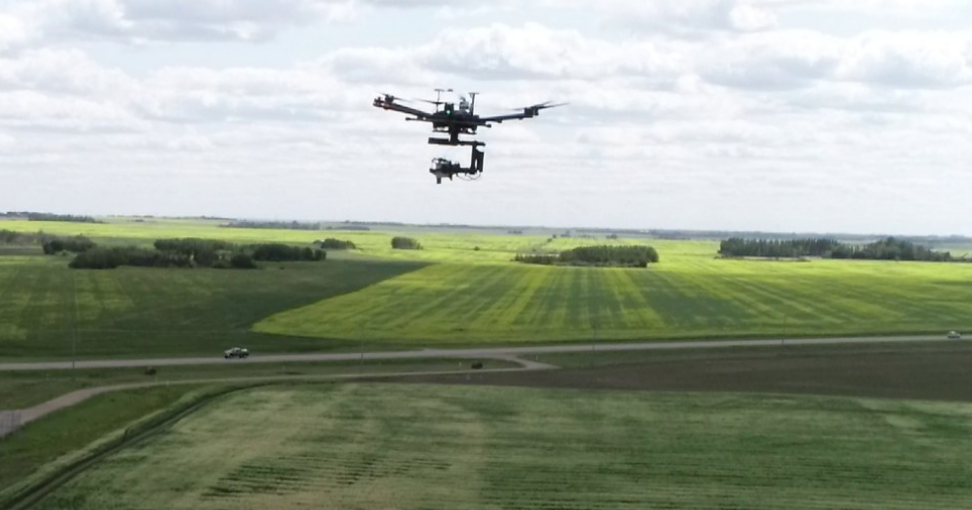
Scientists from Nanyang Technological University, Singapore, show off a device that recognizes hand gestures.
New Tech: Selective Spraying, Gesture Reading & Advanced Neuro Chip
Last week was an unusual week, to say the least in so many fields, but there were some in the news from the world of AI caught Seeflection’s attention. One that looks like it is not only earth-friendly but driven by AI, and that isn’t always what you might expect when algorithms meet boll weevils. Protein Industries Canada announced the development of new technology that specifically targets pests when spraying fields, increasing efficiencies and providing economic benefits for farmers.
A piece in newsire.ca and written up by the Protein Industries of Canada report they can be very economical in targeting pests and weeds without being destructive.
The technology uses AI to find weeds and crop pests while flying over a field, reducing pesticide use up to 95 percent while keeping the harvests at the same level, saving farmers approximately $52 per acre. The technology can be retrofitted for new or existing sprayers.
“The effect this new technology will have on Canada’s plant-protein sector is tremendous,” Protein Industries Canada CEO Bill Greuel said. “Consumers want plant-protein products that were grown sustainably, without sacrificing on quality or economic value. This is particularly true in international trade where, despite Canada’s reputation as a supplier of high-quality agrifoods, our products are facing increasing testing. Thanks to the work being done by Precision.ai, Sure Growth Solutions, Exceed Grain Marketing and GIFS, Canada’s plant proteins are one step closer to being the highlight of plates of consumers around the world.”

Real-time weed recognition using AI.
As they say in Canada, ” take off AI, eh?” The company says it will share the technology with the rest of the world.
Singapore Designs AI System to ID Hand Gestures
The NTU team has created a “bioinspired” data fusion system that uses skin-like stretchable strain sensors made from single-walled carbon nanotubes.
According to biospectrumasia.com, scientists from Nanyang Technological University, Singapore (NTU Singapore) developed an AI system that recognizes hand gestures by combining skin-like electronics with computer vision. The technology has been adopted in high-precision surgical robots, health monitoring equipment and gaming systems. Gaming systems are profit centers that incentivize groups to develop these advances.
The NTU scientists developed their bio-inspired AI system by combining three neural network approaches in one system: they used a convolutional neural network, which is a machine learning method for early visual processing, a multilayer neural network for early somatosensory information processing, and a sparse neural network to “fuse” the visual and somatosensory information together.
The result is a system that can recognize human gestures more accurately and efficiently than existing methods. And they are developing a virtual reality (VR) and augmented reality (AR) system based on the AI system developed, for use in areas where high-precision recognition and control are desired, such as entertainment technologies and rehabilitation in the home.
Journal Reviews NeuroChip Improvements
Techsplore.com featured a deep piece last week about the advancements in neuro chips. Neuro chip interfaces are brain chips that monitor the ion channel activity which regulates neuron connections in the brain by exciting or inhibiting electrical activity. Some are uncertain whether the benefits of neuro chip interfaces outweigh the risks. However, using this technology will aid in learning about neurodegenerative diseases that have not yet been researched.
In recent years, research teams worldwide have been developing computational techniques inspired by the human brain, such as deep learning algorithms. While some are highly promising numerous applications, conventional hardware fails to support their computational load and slows performance. New electronic components that are more like the structure of the human brain hold promise to solve those problems. A class of neuro-inspired computing chips specifically designed for AI applications mimic the neural structures in humans and other animals.
Researchers at Tsinghua University in China have reviewed recent advancements in the design of neuro-inspired computing chips to gain insight on the progress made so far and identify improvements to be made. Their review paper, published in Nature Electronics, also outlines a series of co-design principles that could inform the development of new neuro-inspired circuits, devices, and algorithms.
“The idea for our paper came from our previous attempts at designing neuro-inspired computing chips,” Huaqiang Wu, one of the researchers who carried out the study, told TechXplore. “In our past studies, we found that it is difficult to optimize the performance of these chips on an individual level, such as the device or circuit level, and that such a chip needs to be optimized with co-design strategies that cover a broad range of elements, from devices to algorithms.”
Wu and his colleagues highlight four metrics that engineers could focus on when trying to evaluate the effectiveness of neuro-inspired computing chips: computing density, energy efficiency, computing accuracy and chip learning capability.
read more about AI targeting agricultural pests at newswire.ca







Leave A Comment